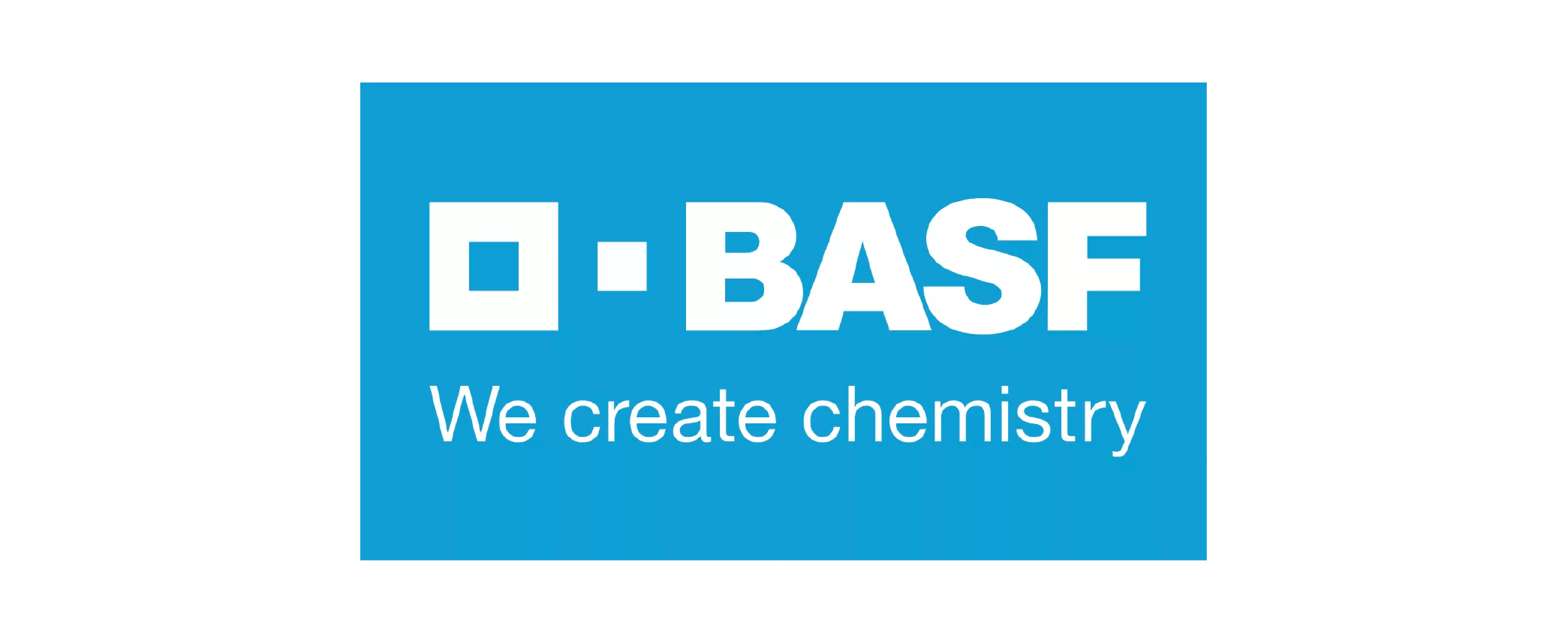The global Specialty Fitness Programs Market size was valued at USD 150 Billion in 2024 and is projected to expand at a compound annual growth rate (CAGR) of 12% during the forecast period, reaching a value of USD 350 Billion by 2032.
The "Specialty Fitness Programs Market Research Report" by Future Data Stats provides an in-depth examination of the market landscape, utilizing historical data from 2021 to 2023 to identify key trends and growth patterns. Setting 2024 as the foundational year, the report explores consumer behavior, competitive forces, and regulatory frameworks that influence the industry. It transcends basic analysis, delivering a thoroughly researched forecast extending from 2025 to 2033. By employing sophisticated data analysis methodologies, the report not only outlines the market's growth trajectory but also uncovers emerging opportunities and foresees potential obstacles, empowering stakeholders with vital insights to adeptly navigate the changing market landscape.
MARKET OVERVIEW:
The Specialty Fitness Programs Market focuses on customized fitness solutions designed to meet specific health, performance, or lifestyle goals. These programs often cater to unique needs—such as weight management, flexibility improvement, stress relief, or athletic training—and are delivered through formats like personal training, group classes, or digital platforms. Businesses and service providers in this market aim to attract health-conscious individuals, corporations, and wellness institutions by offering targeted fitness experiences. By addressing diverse consumer preferences and wellness trends, the market supports long-term engagement and differentiation in a competitive fitness industry.
MARKET DYNAMICS:
Specialty fitness programs are embracing digital transformation, with virtual training sessions, app-based coaching, and hybrid models becoming mainstream. Personalized programs that integrate wearables and fitness tracking tools are gaining popularity, as users seek data-driven insights to improve their performance. Mind-body workouts, such as yoga and mobility training, are also rising in demand due to growing awareness of mental wellness. Additionally, boutique studios offering niche services continue to attract urban professionals looking for curated fitness experiences. In the near future, the market is expected to expand further through AI-powered training platforms, gamified workouts, and wellness-focused corporate packages. Businesses have growing opportunities to cater to seniors, teens, and underserved populations with tailored programs. As health and fitness become lifestyle priorities, the scope for innovation in program delivery, pricing models, and customer engagement will widen, encouraging both established players and startups to invest in unique offerings.
This shift drives demand for specialized programs, such as yoga, Pilates, and high-intensity interval training (HIIT). As a result, fitness centers and studios are adapting their offerings to attract diverse clientele, enhancing engagement and retention. However, the market faces certain challenges. Economic fluctuations and the rising cost of gym memberships can deter potential participants from committing to specialty programs. Additionally, competition from at-home workout options and digital fitness platforms poses a threat to traditional fitness venues. Despite these restraints, opportunities abound, particularly in the realm of technology integration. Innovations like fitness apps and virtual coaching can enhance accessibility and convenience, drawing in a broader audience eager to invest in their health.
SPECIALTY FITNESS PROGRAMS MARKET SEGMENTATION ANALYSIS
BY PROGRAM TYPE:
Personal training continues to lead this segment as it offers customized workouts tailored to individual goals, making it particularly appealing to those seeking fast and focused results. Clients appreciate the accountability and one-on-one guidance that personal trainers provide, which has helped this program type maintain strong growth. The rise of mobile and virtual personal training has further expanded its reach, enabling users to access expert support from anywhere. Group fitness classes remain a staple across gyms and studios due to their motivational environment and cost-effective nature. Participants benefit from social interaction and a structured routine, which enhances program adherence. Innovations in class formats—from HIIT to hybrid workouts—keep offerings fresh and appealing to a wide demographic.
Yoga & Pilates also show strong performance, particularly among consumers prioritizing low-impact exercise and mental clarity. These programs are popular for improving flexibility, core strength, and balance. Their integration into workplace wellness and digital platforms has driven wider adoption, especially among urban adults and older populations.
BY FITNESS GOAL:
Weight loss dominates as a key motivation behind joining specialty fitness programs. Consumers actively seek structured programs that combine exercise with nutritional guidance for sustained results. The growing awareness of obesity-related health risks continues to drive demand for targeted solutions in this space. Strength training has gained prominence, particularly with its appeal across age and gender groups. From muscle building to injury prevention, strength-based programs offer measurable progress and long-term health benefits. Fitness brands increasingly highlight these advantages to attract a performance-driven audience.
Flexibility and mobility programs are becoming essential, especially among older adults and office workers experiencing sedentary lifestyles. Programs focusing on joint health and movement quality are seeing growth, as users recognize the importance of mobility for everyday function and injury prevention.
BY END USER:
Individual consumers are the largest end user segment, with demand driven by personal health goals and lifestyle choices. The flexibility to choose from in-person, virtual, or hybrid options appeals to a broad base, from beginners to fitness enthusiasts. Corporate wellness programs are emerging as a powerful channel, as businesses invest in employee health to boost productivity and reduce absenteeism. Specialty fitness offerings within these programs, such as yoga sessions and fitness challenges, are increasingly tailored to workplace environments.
Fitness centers and gyms continue to serve as key hubs for specialty programs, providing access to diverse offerings under one roof. These facilities often act as trendsetters, integrating the latest fitness concepts and training techniques to maintain a competitive edge.
BY DEMOGRAPHICS:
Children and teenagers are engaging more with fitness through fun and functional specialty programs. Schools, sports academies, and youth clubs promote fitness routines that build coordination, strength, and confidence, often blending education with physical activity. Adults represent the core market for specialty fitness programs, with preferences shaped by career demands, family responsibilities, and health priorities. Many opt for flexible formats like evening classes, virtual coaching, and mobile apps that fit into busy schedules. Seniors are increasingly drawn to low-impact fitness programs that focus on balance, joint strength, and overall well-being. Tailored approaches such as chair yoga, aquatic fitness, and gentle strength training ensure accessibility while promoting independence.
In terms of gender, men tend to gravitate toward high-intensity programs like CrossFit, martial arts, and strength training, driven by performance goals. Women often favor group classes, dance fitness, and holistic approaches like yoga that combine physical and mental benefits. Gender-neutral programs are also on the rise, appealing to individuals who prefer inclusive environments and non-binary options, often promoted through progressive fitness brands and community-focused studios.
REGIONAL ANALYSIS:
In North America, the specialty fitness programs market remains strong due to high health awareness, widespread gym culture, and early adoption of digital fitness platforms. The U.S. leads the region with a growing demand for personalized training, boutique studios, and virtual fitness subscriptions. Canada follows with an increasing focus on holistic wellness, especially among urban populations. Consistent investment in corporate wellness and mental health programs further supports regional growth.
Across Europe, the market benefits from a balanced focus on physical activity and wellness. Countries like Germany, the UK, and the Netherlands show a steady rise in demand for group fitness and low-impact training options such as Pilates and aquatic fitness. In Asia Pacific, rising disposable incomes and urbanization fuel growth, especially in India, China, and Southeast Asia, where yoga, dance fitness, and tech-driven programs are gaining ground. Latin America sees expansion in urban areas through community-based group programs, while the Middle East and Africa experience increased interest in fitness due to lifestyle shifts and premium gym openings in key cities.
MERGERS & ACQUISITIONS:
- In Jan 2024: XYZ Fitness acquired boutique cycling chain SpinFlow to expand its specialty cycling programs.
- In Feb 2024: FitRevolution launched AI-driven personalized yoga programs in partnership with MindBodyTech.
- In Mar 2024: Wellness Group merged with BarreCore to strengthen its premium barre fitness offerings.
- In Apr 2024: Peloton announced a strategic partnership with UFC to develop combat fitness programs.
- In May 2024: F45 Training acquired boutique HIIT studio chain BurnZone to enhance its specialty workout portfolio.
- In Jun 2024: Nike launched a new specialty running program, ""Nike Run Club Elite,"" in collaboration with top coaches.
- In Jul 2024: Hydrow expanded into rowing-based rehab programs after acquiring AquaFit Rehab.
- In Aug 2024: Pure Barre was acquired by a private equity firm to accelerate franchise growth.
- In Sep 2024: Orangetheory Fitness introduced a new strength-training specialty program, ""OTF Lift.""
- In Oct 2024: Equinox acquired Rumble Boxing to diversify its high-intensity training offerings.
- In Nov 2024: Lululemon partnered with Mirror to launch exclusive yoga and meditation programs.
- In Dec 2024: CrossFit Inc. merged with a digital fitness platform to expand its virtual specialty programs.
KEY MARKET PLAYERS:
- Peloton
- F45 Training
- Orangetheory Fitness
- Pure Barre
- CrossFit
- Equinox
- SoulCycle
- Barry’s Bootcamp
- Rumble Boxing
- CorePower Yoga
- Zumba Fitness
- TRX Training
- Les Mills International
- Hydrow
- Mirror (by Lululemon)
- CycleBar
- Burn Boot Camp
- StretchLab
- Solidcore
- Club Pilates
Specialty Fitness Programs Market:Table of Contents
Introduction
- Market Overview
- Market Trends and Insights
- Market Drivers and Challenges
Market Segmentation
- By Program Type
- By Fitness Goal
- By End User
- By Demographics
Competitive Landscape
- Key Players
- Market Share Analysis
- Strategies of Key Players
Market Dynamics
- Market Drivers
- Market Restraints
- Market Opportunities
Market Forecast and Trends
- Market Size and Growth Projections
- Future Market Trends
Regional Analysis
- North America
- Europe
- Asia Pacific
- Latin America
- Middle East & Africa
Conclusion
- Summary of Key Findings
- Strategic Recommendations
Specialty Fitness Programs Market Segmentation
By Program Type:
- Personal Training
- Group Fitness Classes
- Yoga & Pilates
- CrossFit
- Martial Arts & Boxing
- Dance Fitness
- Cycling
- Aquatic Fitness
- Other Specialty Programs
By Fitness Goal:
- Weight Loss
- Strength Training
- Flexibility & Mobility
- Endurance Building
- Rehabilitation & Injury Prevention
- Mental Well-being & Stress Relief
- Sports Performance
By End User:
- Individual Consumers
- Corporate Wellness Programs
- Fitness Centers/Gyms
- Health & Wellness Clinics
- Rehabilitation Centers
- By Demographics
By Age Group:
- Children & Teenagers
- Adults
- Seniors
- Gender
- Male
- Female
- Gender-neutral Programs
By Geography:
- North America (USA, Canada, Mexico)
- Europe (UK, Germany, France, Italy, Spain, Rest of Europe)
- Asia-Pacific (China, Japan, Australia, South Korea, India, Rest of Asia-Pacific)
- South America (Brazil, Argentina, Rest of South America)
- Middle East and Africa (GCC Countries, South Africa, Rest of MEA)
WHY SHOULD YOU INVEST IN A MARKET RESEARCH REPORT?
Smarter Business Decisions:
A high-quality market research report delivers valuable insights into industry trends, customer preferences, and competitor strategies. With solid data guiding your choices, you can minimize risks and confidently pursue new opportunities—whether launching a product or expanding into new markets.
Spot Hidden Opportunities:
Market research uncovers unmet customer needs and emerging trends before they become mainstream. By aligning your products or services with these opportunities, you can stay ahead of the competition and capture untapped demand.
Know Your Competition Inside Out:
Gain a clear picture of your competitors' strengths, weaknesses, and strategies. This knowledge helps you refine your unique selling points, craft stronger positioning, and outmaneuver rivals effectively.
Sharper, More Effective Marketing:
Understanding your audience is key to successful marketing. Market research reveals who your customers are, what drives their decisions, and how they engage with brands. With these insights, you can create tailored campaigns that deliver better results and higher ROI.
Reduce Risks Before They Arise:
Every business move carries some risk—but research helps you anticipate challenges before they become costly. By analyzing market conditions and potential obstacles, you can make proactive adjustments to protect your bottom line and reputation.
Strengthen Your Case for Funding:
Investors and lenders want proof of market potential before backing a business. A well-researched report provides the data-driven evidence they need, boosting your credibility and increasing your chances of securing capital.
Stay Ahead of Industry Shifts:
Markets evolve fast, with new technologies, regulations, and consumer behaviors constantly reshaping the landscape. Regular market research ensures you stay informed, adapt quickly, and maintain a competitive edge in your industry.
RESEARCH METHODOLOGY AT FUTURE DATA STATS
At Future Data Stats, we combine decades of industry expertise with cutting-edge research techniques to deliver unparalleled market intelligence. Our team of seasoned analysts employs a dynamic, data-driven approach to uncover actionable insights, helping businesses navigate complex market landscapes with confidence.
Comprehensive & Cutting-Edge Market Analysis
We go beyond surface-level trends to provide a 360-degree view of market dynamics. Our research methodology is designed to:
✔ Accurately assess market size, growth patterns, and competitive landscapes.
✔ Identify emerging opportunities through real-time trend analysis and predictive modeling.
✔ Validate findings with high-quality data, expert consultations, and independent verification.
Our insights empower decision-makers with strategic clarity, ensuring they stay ahead in rapidly evolving industries.
Multi-Source Data Collection & Validation
We leverage a diverse mix of primary and secondary research sources, including:
- In-depth stakeholder interviews (industry leaders, suppliers, distributors, and end-users)
- Statistical databases & market reports from authoritative global sources
- Regional market intelligence to capture localized trends and demand shifts
- Proprietary analytical models tailored to specific industry needs
- By cross-verifying data from multiple streams, we ensure maximum accuracy and reliability.
Key Advantages of Our Research Approach
- Actionable Intelligence – Clear, data-backed recommendations for strategic planning.
- Technology-Enhanced Accuracy – Advanced tools for data validation and trend forecasting.
- Unbiased Insights – Independent analysis free from external influence.
Our Two-Tier Research Framework
- Primary Research – Direct Industry Engagement
- Expert Interviews: Over 25+ hours of discussions with key stakeholders across the value chain.
- Targeted Surveys: Structured questionnaires for KOLs (Key Opinion Leaders) to gauge market sentiment.
- Competitive Benchmarking: Assessing leading players to determine market positioning.
- Secondary Research – Extensive Data Synthesis
- Analysis of 3,000+ documents, including industry reports, whitepapers, and regulatory publications.
- Global & regional data mining from government databases, trade journals, and financial reports.
- Macroeconomic & sector-specific trend mapping for long-term forecasting.
Dual Analytical Approach
We employ both top-down and bottom-up methodologies to ensure precision:
- Bottom-Up Analysis: Calculating market size from granular data, ensuring detailed accuracy.
- Top-Down Assessment: Validating findings through macroeconomic indicators and industry benchmarks.
Why Choose Future Data Stats?
✔ 70+ years of collective expertise in market intelligence.
✔ Customized research models for sector-specific accuracy.
✔ Transparent, reliable, and forward-thinking insights.
With Future Data Stats, you don’t just get data—you get a strategic advantage. Partner with us to unlock the full potential of your market decisions.
Specialty Fitness Programs Market Dynamic Factors
Drivers:
- Increasing health awareness boosts demand for fitness programs.
- Rising adoption of personalized fitness services accelerates market growth.
- Growing popularity of fitness-centric social media influences program participation.
Restraints:
- High cost of specialized fitness programs limits accessibility for some consumers.
- Limited availability of well-trained fitness professionals in certain regions.
- Uncertainty in economic conditions may affect consumer spending on fitness services.
Opportunities:
- Expanding corporate wellness programs create new revenue streams.
- Integrating technology with fitness programs (e.g., apps, wearables) enhances engagement.
- Increasing focus on mental health drives demand for holistic fitness solutions.
Challenges:
- Intense competition among established fitness brands and new entrants.
- Keeping up with evolving fitness trends and consumer preferences.
- Ensuring customer retention in a market with high attrition rates.
Specialty Fitness Programs Market Regional Key Trends Analysis
North America:
- Rise in online and virtual fitness programs.
- Increased focus on personalized wellness experiences.
- Growth of boutique fitness studios and specialized gyms.
Europe:
- Popularity of eco-conscious fitness programs (e.g., green gyms).
- Expansion of corporate wellness initiatives.
- Increasing interest in outdoor fitness activities.
Asia Pacific:
- Growing middle-class population driving fitness program demand.
- Rising interest in traditional fitness programs like yoga and martial arts.
- Technology integration in fitness programs for remote participation.
Latin America:
- Growing focus on weight loss and fitness programs for women.
- Rising interest in group fitness activities.
- Collaboration between fitness brands and healthcare providers.
Middle East & Africa:
- Increasing popularity of luxury fitness programs and wellness retreats.
- Expanding fitness programs targeting the younger demographic.
- Growth of fitness centers in urban areas with a focus on premium services.
Frequently Asked Questions

















